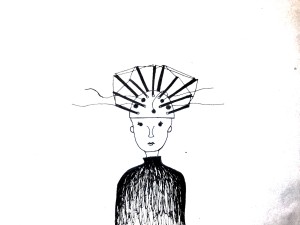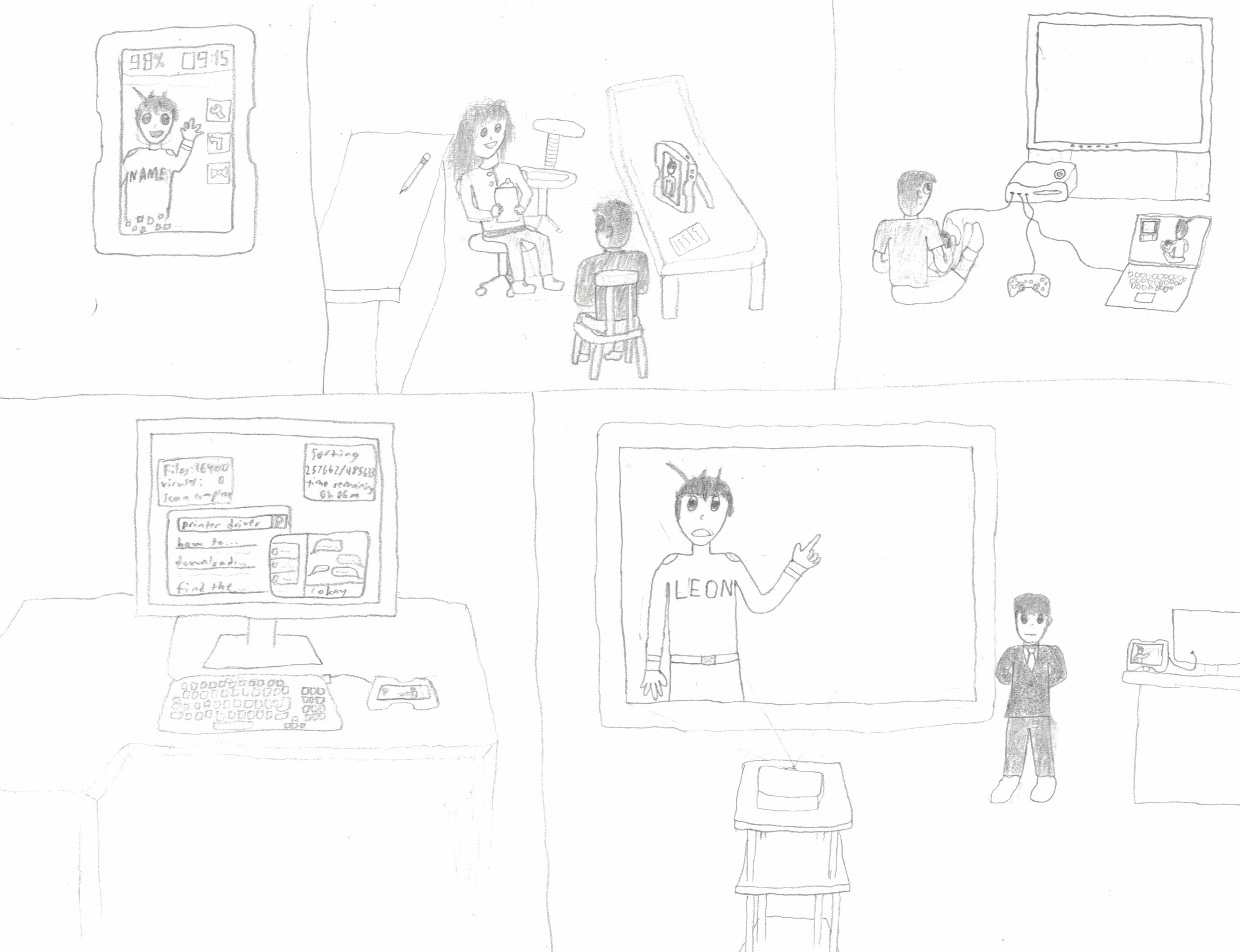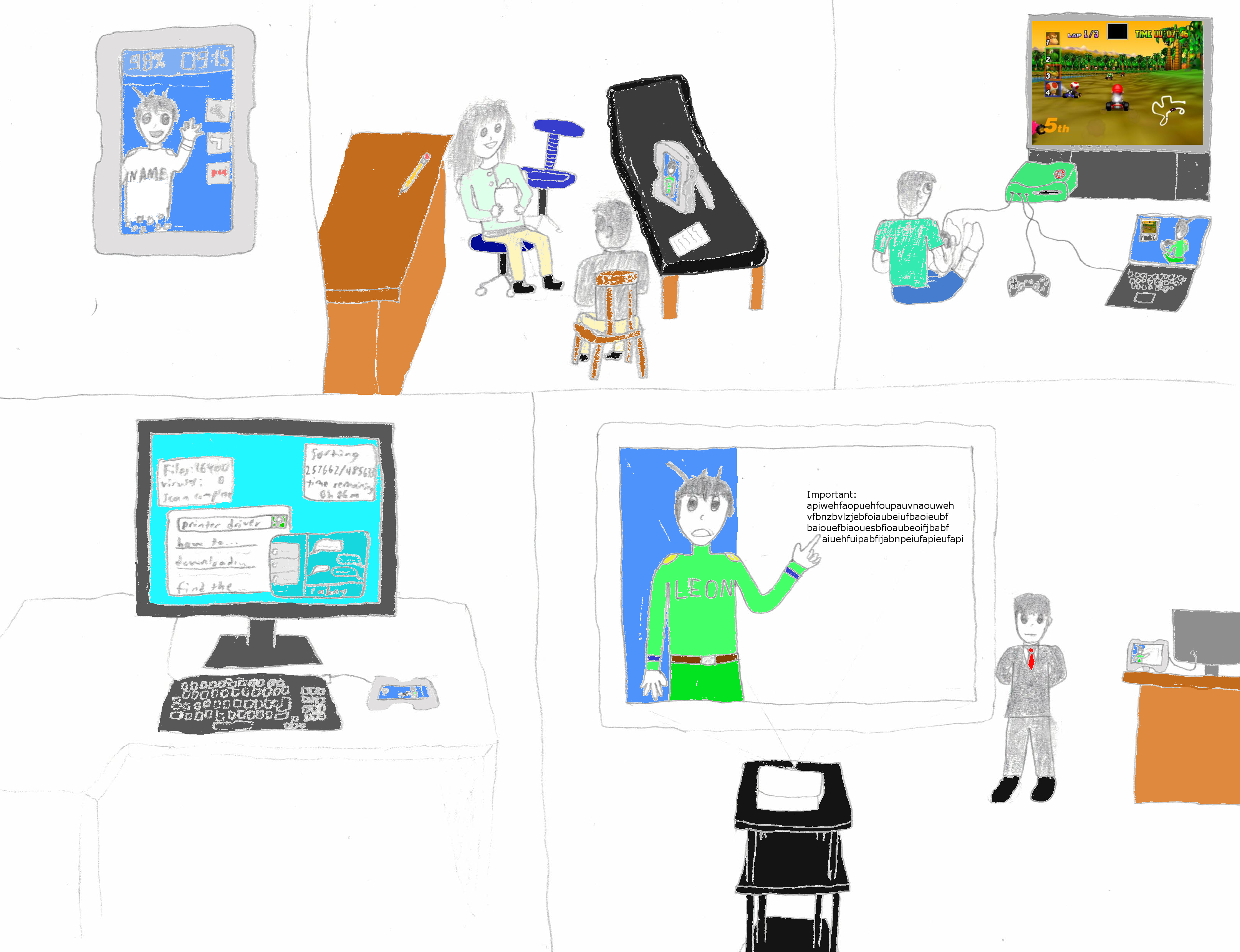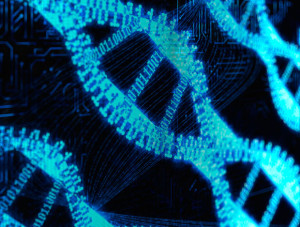It was her turn to enter the room that they used to run the tests on various citizens. The room was sized to fit only one person. It was approximately the size of a small shower, and was bound to trigger panic attacks among any claustrophobics. Good thing she knew she wasn’t one. She was however, just like everyone else, deathly afraid of having nails drilled into her skull. She was also going to have all of the hair on her head shaved off, so that there would be no interference with the signals entering her brain. She already felt unattractive. This would only make it worse.
Everyone has to take the test once they turned 19, at least everyone who wants to have a proper job and make enough money to live a good life. The idea of the whole system is to assign everyone a career that best fits the way his or her brain works. When an individual takes the test and pursues the career that is assigned, the government pays the person enough money to live according to the person’s dependents. Of course, careers requiring college and a higher level of work are paid greater sums. This creates divisions among society, where lower status individuals live in the smaller homes and live normal lives, while the rich are awarded because of their natural brilliance or talent. Everyone lives based off of decisions made by a machine. A machine that apparently reads brain waves, records the size of different parts of the brain, and measures the chemicals located in the brain. All of these characteristics are entered into a formula that measures your brains capabilities. Thus, assigning you to a career that would best work for you and would make you useful to society.
Individuals who didn’t take the exam would be on their own. Most companies don’t hire people who haven’t been tested, because they’re not sure if the person would be qualified for the job. Even if that individual has a college degree, they most likely wouldn’t be hired. They could start their own business, but people wouldn’t trust it and the government wouldn’t help fund it. If you took the exam, but didn’t accept the assigned career, you could choose a different path for yourself. Of course, you probably wouldn’t get hired and would most likely end up living on the streets.
Some people feared the side effects and possibility of death caused by the machine. People reacted differently from the strong signals sent through wires into the brain. First, a steel hat is placed on the patient’s head. Then nails are used to drill holes through the hat and into the skull in order for the signals to pass. Accidents have occurred where the nails have pierced the brain, thus leading to the patient’s death. Millions have died since the machine was developed in 2020. Millions of others have become deformed, given birth to deformed babies, or gotten cancer. Others have gained special abilities. They’re the lucky ones.
The original creators, Broderick and Leighton Vaughn, had developed the machine to read minds. They were scientists who were funded by the government to invent mind reading technology for the military to use on terrorists and other criminals. A massive strike against the use of the machine and threats from other countries led the government to end the original purpose of the technology. They came to the idea of using it to create order in society. After doing various tests, they came to the conclusion that the machine was useful for understanding the intellectual capabilities people had. This led to its final purpose of essentially assigning jobs to individuals. This prevents competition among citizens for careers that are popular, and helps distribute individuals equally among careers that allow society to work efficiently.
Ever since the government had set these protocols, races have become more distributed among all possible career paths. People can no longer view race as a barrier, because the machine simply examines intellect through the brain and doesn’t detect race. Race has nothing to do with it. This equality has led most people to accept the machine, despite its drawbacks. People have the mindset that everyone is working the best job that they could possibly get. However, not everyone thinks this way.
She didn’t want to take the exam. She felt that she would rather live on the streets than go through with following a career that she didn’t love. She also didn’t want to end up living among the lower class citizens. They were highly disregarded in society, since they were viewed as incapable of understanding intellectual concepts. People saw them as dumb, since they were given careers requiring more physical labor than intellect. Health professions, engineers, and government positions were given the highest status in society. Creative individuals (artists, musicians, etc.) were regarded as unique, since their brains worked in ways that others didn’t. She hoped she would be assigned something she would love. The problem was, she didn’t really know what she loved.
All of a sudden, her name was called. She entered the room and sat on the wooden chair pushed up against the wall. She didn’t know what was in store for her. She realized her life would now depend on the calculations of a steel hat. What type of life would that be, she asked herself. If only she lived to find out.




